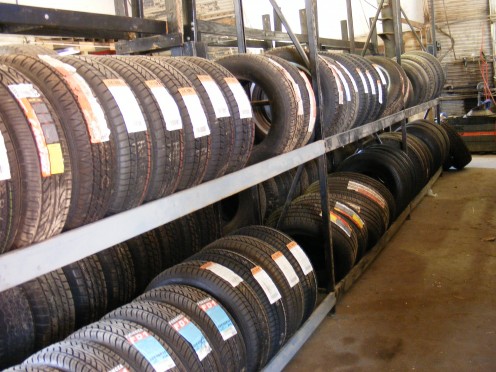A Short Look at Small Business Growth - Part 1
Opening of a Tire Store
When I was 14, my parents opened a small tire store. I got a quick lesson in practical economics that continued throughout high school and college.
I've always been an impatient person, always wanting something more. I've always got an iron in the fire, trying to put my brand on something else. Part of this is a history of that restlessness when applied to a small business.
The Old Tire Store

Early Growth
Back to our story: in 1986 my parents opened a little tire store. We handled mainly used tires, but found a couple of local suppliers for new tires. One put 2 or 3 tires in on consignment--enough that we had samples and could go grab some (and pay for them) as soon as we sold them.
Through hard work, perseverance, and more hard work, the business grew from sales of about 50,000 the first year to about 250,000 a year. Not huge, but livable.
After I got out of college, I originally planned on going to grad school, getting a PhD, and teaching college. Somewhere in there, I really decided that teaching wasn't for me. I never finished my Master's Thesis (the only thing I needed to do to finish my MA in History)...and I got divorced from my first wife (my college sweetheart).
Plans for More Growth & Eventual Sale
While I had not paid a lot of attention to the family business in years, I decided to pitch in and try and get things turned around. While sales were still OK, my father seemed tired and the business seemed stagnant.
I hit the ground running. I wanted to turn the business around so that it could be ready to sell within 5 years. While a "5 year plan" had sinister, Stalinist overtones to my historically-minded mind, it seemed like a reasonable amount of time to turn the place around, clean it up, and make it saleable.
Attempts to Reinvent the Business
The first step I took was merely researching new tire suppliers that served our area. There weren't many. We were 150 miles west of Ft. Worth, which meant we were pretty much in the middle of nowhere. I did finally find a couple of companies that offered us competitive prices.
I did my homework, pushed my pencil around, and settled on a super-inexpensive tire to stock. It was made in the US, which I thought was a concern of our customers. I set a price point that was competitive, but had slim margins. Basically all we made per tire was $10 and that included mounting, balancing, and valve stem, too. In effect, we gave you the tire at our cost and you paid $10 for mounting.
Where I thought we would make the money came from two places: 1) take off tires. The more tires you sell, the more good used tires you end up with; and, 2) that $10. While it wasn't much, it was about what we made per used tire, anyway. It was a whole lot easier to mount new tires than used. You never found a nail you missed or a patch that leaked in a new tire.
Plan 1 Fails
While we started selling a great number (for us) of these tires, we quickly learned my miscalculations. The first was that we really didn't have enough profit margin to buy the good take off tires from the people who wanted something for them. We ended up putting on sets of tires for less than we paid to get a set of used tires: pretty tough business, no?
The second was that we discovered that the new tires we were handling were horrible. Yes, they were made in the US. Yes, they were manufactured by a major player in the global market. They were garbage. We started having high rates of warranties. Tire warranties are pro-rated based on tread wear, if your tire was 50% gone, you got 50% credit towards a new one. Plus we'd charge $10 to mount and balance or we'd be working for free. The customers didn't like that.
Lessons Learned
While we ultimately changed tire lines and fixed our profit structure on the new tires, I learned the important lesson that if you're a small player, you have to be careful both in your profit structure and in the quality of your product. The poor quality tires that we were selling affected our reputation.
While it took quite a few months--probably closer to a year--for us to figure out all of the problems with the quality of the product, the pricing structure quickly became apparent. If it takes an average worker an hour to mount 4 tires, that's $40 an hour, less overhead, maximum profit per employee per hour.
That doesn't sound bad, except the percentage of profit vs. investment was low. Then you had the overhead, and the wages, and, well, it wasn't pretty. Yes, during that first summer, we were mounting hundreds of tires a week, but all of that hard work was not turning into money in our pockets. It was just making money for our supplier.
Look For More, Soon
I'll continue to lay out how things went with the business over the next few weeks. Be looking for more parts to this story. I'll include the links to the articles here, as I write them.







